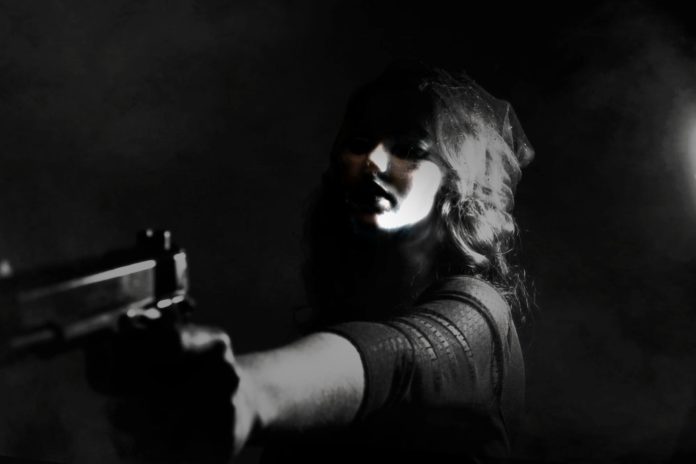By Rabbi Yair Hoffman for 5tjt.com
Join our WhatsApp groupSubscribe to our Daily Roundup Email
Question: Dear Rabbi, In light of the recent life sentence of the murderer at the Chabad of Poway and your view that synagogues should have either security guards or armed members even on Shabbos – what about women and guns? A Reader.
Answer: The pertinent Gemorah is found in Nazir 59a. There the Gemorah discusses the pasuk in Dvarim 22:5 that a woman should not wear men’s clothing nor should a man wear women’s clothing. Rabbi Eliezer Ben Yaakov uses this verse as a source that women should not go out to war with weaponry.
Then in the Targum Yonasan Ben Uziel (Shoftim 8:26) we find that he provides this idea as the explanation for why Yael employed a tent peg – not a weapon to do away with Sisera.
BACKGROUND
And just for some background, Devorah was both a nevi’ah and a Judge during the period of the Shoftim – before we had kings. Devorah advised Barak to take 10,000 men from the tribes of Naphtali and Zvulun to Har Tabor to do battle against King Yabin of Cnaan. Barak said he would go, but only if DVorah went with him. She responded with a Nevuah that the honor of beating the Cnaanim would go to a woman.
In the battle at Mount Tabor, Hashem caused a cloudburst to rain heavily which caused the river to overflow. The chariots of the general were unable to move well. Sisera ran away and sought refuge in Yale’s tent. He asked for water, but she gave him milk. Sisera fell asleep and Yael then pounded a tent peg in his head. When Barak arrived she showed him Sisera’s dead body.
The Targum Yonasan explains that Yael used a tent peg so as not to be in direct violation of the pasuk in Dvarim.
The Shulchan Aruch codifies all of this in YD (182:5).
PIKUACH NEFESH
On the other hand, there is also the principle of Pikuach Nefesh that nothing stands before the preservation of life.
This concept is derived from no less than six different sources. Firstly, the Torah tells us v’chai bahem – and we shall live by the Torah – not die by them.
Secondly, the verse in Parshas Ki Taytzai (Dvarim 22:2) discusses the Mitzvah of Hashavas Aveida, returning an object, with the words “vahashaivoso lo – and you shall return it to him.”
The Gemorah in Sanhedrin (73a), however, includes within its understanding of these words the obligation of returning “his own life to him as well.” For example, if thieves are threatening to pounce upon him, there is an obligation of “vahashaivoso lo.” In other words, this verse is the source for the Mitzvah of saving someone’s life. I believe this is the general mitzvah the Shulchan Aruch refers to in Shulchan Aruch Orech Chaim 325.
Lo Saamod Al Dam Rayacha
There is a negative Mitzvah of not standing idly by your brother’s blood as well. This is mentioned in Shulchan Aruch (CM 426:1) and in the Rambam.
Lo Suchal l’hisalaym
There is yet another negative commandment associated with the positive commandment of Hashavas Aveida, and that is the verse in Dvarim (22:3), “You cannot shut your eyes to it.” This verse comes directly after the Mitzvah of Hashavas Aveidah. The Netziv (HeEmek Sheailah) refers to this Mitzvah as well.
V’Chai Achicha Imach
The Sheiltos (Sheilta #37), based upon the Gemorah in Bava Metziah 62a, understands these words to indicate an obligation to save others with you. The Netziv in his He’Emek She’ailah understands it as a full-fledged obligation according to all opinions. He writes that he must exert every effort to save his friend’s life – until it becomes Pikuach Nefesh for himself.
V’Ahavta l’Rayacha Kamocha
The Ramban, Toras haAdam Shaar HaSakana (p42-43) understands the verse of “and love thy neighbor as yourself” as a directive to save him from danger as well. Although he discusses the issue of medical danger, it is clear that this is an example, and it would apply to danger from physical enemies as well. Even without the Ramban, however, it is clear that defending and protecting someone from danger is a fulfillment of this Mitzvah.
SO HOW DO WE RECONCILE?
How do we reconcile these two seemingly contradictory concepts?
The Poskim have delineated four examples of exceptions:
1] When time is of the essence (as opposed to when time is not of the essence, as in the case of Yael). (see Yechave Daas Vol. V #55)
2] When there is a period of antagonism and there is a likelihood of attacks (ibid)
3] When one is, generally speaking, in a dangerous area (Sefer Chassidim #200)
4] When a woman travels past rock-throwing and the like (Sefer Chassidim #200)
ADDITIONAL CAVEATS
In regard to these parameters many Poskim have included additional caveats (See for example, Assei Lecha Rav 3:24):
When and if women are trained in the use of weaponry – the training should be done separately – they should attend mixed instructional classes.
When men are available for security duty, women should not hold weapons.
If not enough men are available the women should perform the sentry together and there should not be mixed crews.
The author can be reached at [email protected]


I have guns in my home and I train often so I know how to defend those I love should it ever come to that point.
there is a difference between going out to war as a man and carrying a gun for protection in hostile areas……
Women must be allowed to protect themselves….